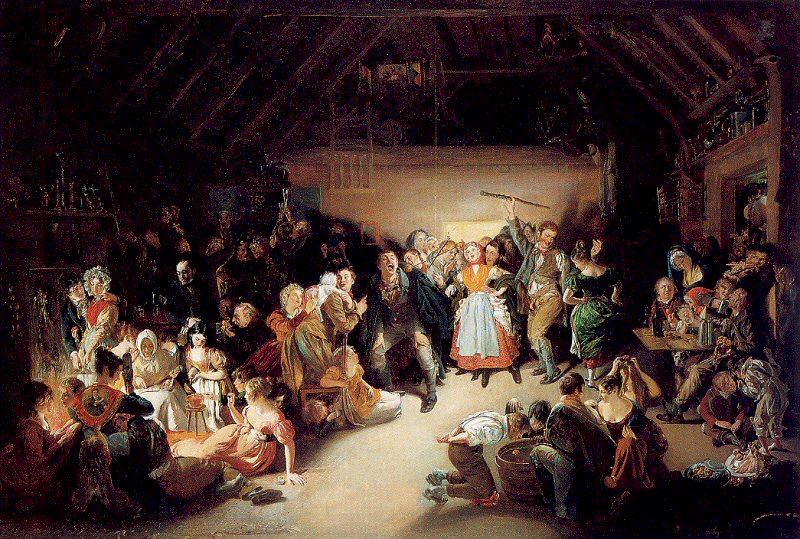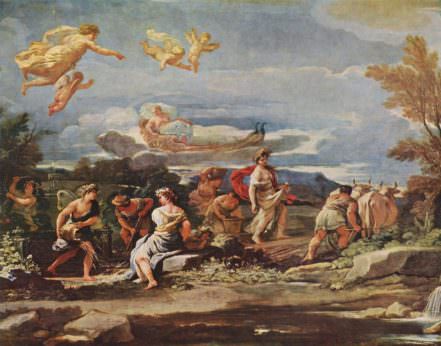Halloween’s Agricultural Roots
Halloween’s ancient roots are as much about agriculture as scary costumes and jack-o-lanterns. Maybe this year you should dress as a zombie farmer to celebrate this holiday’s agrarian past.
Halloween’s Agricultural Roots
Halloween’s ancient roots are as much about agriculture as scary costumes and jack-o-lanterns. Maybe this year you should dress as a zombie farmer to celebrate this holiday’s agrarian past.

It’s believed the Halloween’s origins lie in the ancient Celtic festival of Samhain (pronounced sow-in), which was celebrated from October 31 into November 1, marking the end of the harvest season and the beginning of winter.
It was a time of the year for the Celtic peoples of England, Ireland, Scotland, Wales, northern France, and Brittany to bring their cattle from summer pasture – to slaughter livestock that was unlikely to make it through the long, cold winter and to hold celebratory feasts to consume the meat and other foods that easily spoiled in an age before refrigeration. It was also a time for fairs, regional markets, and assemblies – and the brewing of mead and beer following the harvesting of grains.
“In Ireland, turnips would be carved and used as lanterns, which gave rise to our modern practice of carving jack-o-lanterns”
Our modern conception of Halloween is based on the Celtic belief that Samhain was a time when the boundaries between our world and the Otherworld, a place inhabited by the dead and supernatural creatures like fairies, monsters, demons, and the like, were lowered. The inhabitants of the Otherworld could make their way to our world and unsuspecting humans could find themselves in the Otherworld by accident or trickery. Villagers would dress in frightening outfits to try to fool these dark and dangerous creatures thought to be roaming around that night.
In Scotland, Samhain was a night of chaos when young men would dress up in costumes to impersonate the spirits of the dead, pull pranks on people, and generally raise a ruckus. In Ireland, turnips would be carved and used as lanterns, which gave rise to our modern practice of carving jack-o-lanterns. In Wales, food and drink would be left out for the dead, which may have led to the idea of giving treats to costumed folks representing the departed. Bobbing for apples to predict who you would marry derived from a long-held belief by Celtic people that apples could be used for fortune telling.
There is some conjecture that the ties between apples and Halloween go back to the Roman conquest of Britain that began in 43 AD. A Roman harvest festival dedicated to Pomona, the goddess of abundance and orchards, thought to be celebrated on November 1, may have somehow merged with the festivities of Samhain. Many scholars dispute this, believing this idea was based on a misreading of an early Roman text that describes a feast that was actually held in August for Pomona’s godly consort Vertumnus, (sometimes spelled Vortumnus) the deity associated with the changing of the seasons and the harvest. What we can say for sure is that the Romans brought their love of apples and a superior knowledge of how to cultivate fruit trees with them to the British Isles.

Christianity began making some inroads in the Celtic world as early as the First Century AD, but it didn’t really take off until Constantine the Great began championing the religion in 312 AD helping to spread Christianity throughout the empire. As the Catholic church began supplanting various older religions, Christian holidays were often superimposed on the dates of traditional pagan ones. It’s believed by some scholars that was the case with Samhain with the introduction by the Church of All Hallows’ Eve, on October 31, All Hallows’ Day (more commonly known as All Saints’ Day), on November 1, and All Souls’ Day on November 2. But in Ireland, Scotland, and Wales, remnants of the earlier Celtic traditions remained alongside the Christian holidays. These traditions eventually came to the United States and by the early 20th century Halloween had become a secular holiday mostly for the young, with trick-or-treating used as a way to stem pranking and vandalism that had become associated with the night.
While we’ve pretty much jettisoned the agriculture-related aspects of the holiday, except for the jack-o-lantern and the occasional apple bobbing, we shouldn’t forget it all began with the celebration of agriculture. Maybe this year you should get back to basics and dress up as the goddess Pomona or perhaps a zombie farmer to give a nod to Halloween’s real roots.
Follow us
This work is licensed under a Creative Commons Attribution-NoDerivatives 4.0 International License.
Want to republish a Modern Farmer story?
We are happy for Modern Farmer stories to be shared, and encourage you to republish our articles for your audience. When doing so, we ask that you follow these guidelines:
Please credit us and our writers
For the author byline, please use “Author Name, Modern Farmer.” At the top of our stories, if on the web, please include this text and link: “This story was originally published by Modern Farmer.”
Please make sure to include a link back to either our home page or the article URL.
At the bottom of the story, please include the following text:
“Modern Farmer is a nonprofit initiative dedicated to raising awareness and catalyzing action at the intersection of food, agriculture, and society. Read more at <link>Modern Farmer</link>.”
Use our widget
We’d like to be able to track our stories, so we ask that if you republish our content, you do so using our widget (located on the left hand side of the article). The HTML code has a built-in tracker that tells us the data and domain where the story was published, as well as view counts.
Check the image requirements
It’s your responsibility to confirm you're licensed to republish images in our articles. Some images, such as those from commercial providers, don't allow their images to be republished without permission or payment. Copyright terms are generally listed in the image caption and attribution. You are welcome to omit our images or substitute with your own. Charts and interactive graphics follow the same rules.
Don’t change too much. Or, ask us first.
Articles must be republished in their entirety. It’s okay to change references to time (“today” to “yesterday”) or location (“Iowa City, IA” to “here”). But please keep everything else the same.
If you feel strongly that a more material edit needs to be made, get in touch with us at [email protected]. We’re happy to discuss it with the original author, but we must have prior approval for changes before publication.
Special cases
Extracts. You may run the first few lines or paragraphs of the article and then say: “Read the full article at Modern Farmer” with a link back to the original article.
Quotes. You may quote authors provided you include a link back to the article URL.
Translations. These require writer approval. To inquire about translation of a Modern Farmer article, contact us at [email protected]
Signed consent / copyright release forms. These are not required, provided you are following these guidelines.
Print. Articles can be republished in print under these same rules, with the exception that you do not need to include the links.
Tag us
When sharing the story on social media, please tag us using the following: - Twitter (@ModFarm) - Facebook (@ModernFarmerMedia) - Instagram (@modfarm)
Use our content respectfully
Modern Farmer is a nonprofit and as such we share our content for free and in good faith in order to reach new audiences. Respectfully,
No selling ads against our stories. It’s okay to put our stories on pages with ads.
Don’t republish our material wholesale, or automatically; you need to select stories to be republished individually.
You have no rights to sell, license, syndicate, or otherwise represent yourself as the authorized owner of our material to any third parties. This means that you cannot actively publish or submit our work for syndication to third party platforms or apps like Apple News or Google News. We understand that publishers cannot fully control when certain third parties automatically summarize or crawl content from publishers’ own sites.
Keep in touch
We want to hear from you if you love Modern Farmer content, have a collaboration idea, or anything else to share. As a nonprofit outlet, we work in service of our community and are always open to comments, feedback, and ideas. Contact us at [email protected].by Andrew Amelinckx, Modern Farmer
October 31, 2016
Modern Farmer Weekly
Solutions Hub
Innovations, ideas and inspiration. Actionable solutions for a resilient food system.
ExploreExplore other topics
Share With Us
We want to hear from Modern Farmer readers who have thoughtful commentary, actionable solutions, or helpful ideas to share.
SubmitNecessary cookies are absolutely essential for the website to function properly. This category only includes cookies that ensures basic functionalities and security features of the website. These cookies do not store any personal information.
Any cookies that may not be particularly necessary for the website to function and are used specifically to collect user personal data via analytics, ads, other embedded contents are termed as non-necessary cookies.
This article is about how Halloween started and saying that people would put scary custom’s and jack-o-lanterns and to dress as a zombie farmer to celebrate this holiday’s agrarian past. Halloween was celebrated from October 31 into November 1 marking the end of the harvest season and beginning of winter. People from England, Ireland, Scotland, Wales, northern France and Brittany they brought their cattle from summer. A time for fairs, regional markets, and assemblies and the brewing of mead and beer following the harvesting pf grains.
[…] As we wrote a few years back Although haunted homes existed in some kind or another long before this, historian David Skal […]